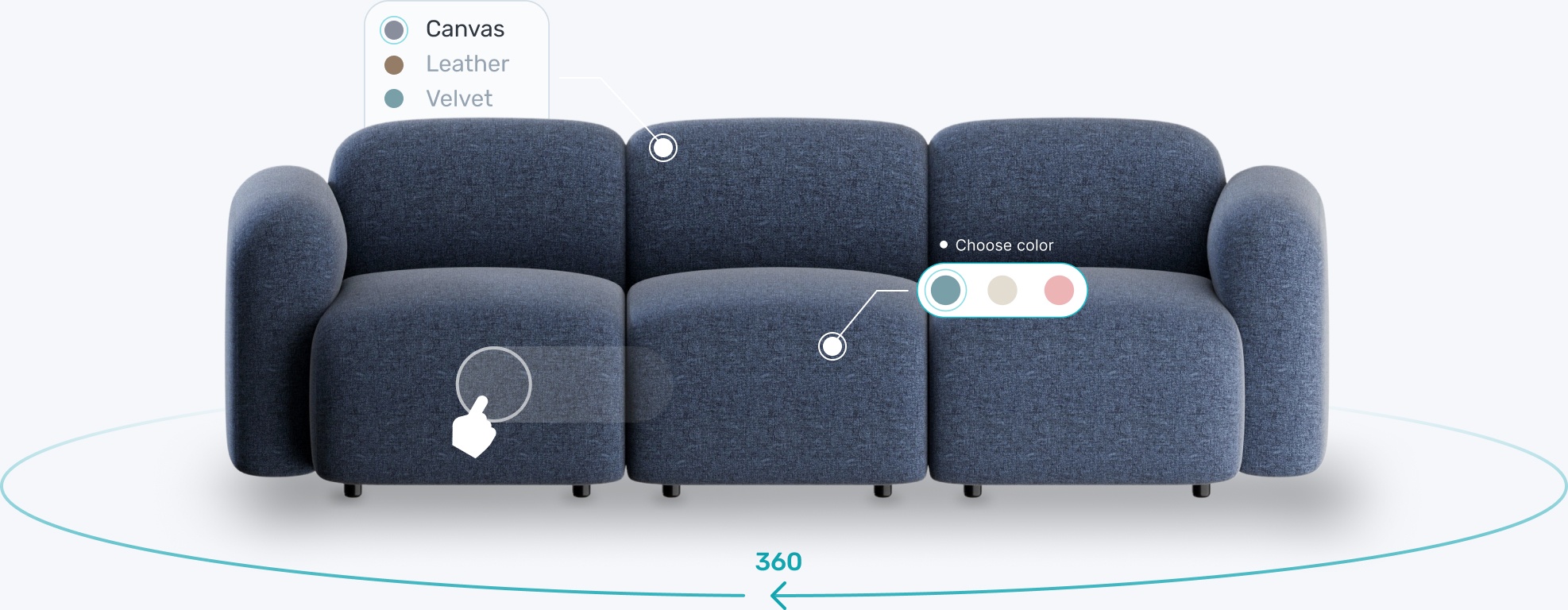Transform your eCommerce strategy with 3D & AR





3D virtual photography empowers retailers to do so much more than what is possible with traditional 2D photography. For starters, it allows online sellers to create versatile product image galleries while giving customers greater confidence about the size, look, and quality.
And getting started with 3D virtual photography couldn’t be any easier. Anyone can make the switch with no special technical or expert knowledge required, as we do all the work for you. But what does the process look like?
To demonstrate just how easy it is to get started with 3D and help you avoid some common customer mistakes, we’ve distilled everything you need to know down to 3️ simple steps.
Before you order your 3D models, it’s important to first decide where your models will be used. Answering these questions at the start is important because there are two different types of 3D models for eCommerce, and each type is recommended for different 3D solutions.
Unlike static product photos, 3D virtual photography can be enriched by interactive 3D solutions such as 3D and 360 viewers, augmented reality (AR), and 3D renders or photorealistic lifestyle scenes - offering unlimited flexibility at an affordable price.
The two types are called Low and High-Poly models, where the basic difference is the polygon count of an individual 3D model. Let’s take a quick look at when you would choose each type.
Low-Poly modeling prioritizes speed over detail. So when modeling for interactive environments, Low-Poly models are generally the way to go to ensure processing power and visual richness. Used in:

High-Poly modeling prioritizes accuracy and visual richness over interactivity. Typically chosen when modeling photorealistic representations of real-world objects. Used in:

When you’re ready to place an order, you can do so directly in our all-in-one Digital Asset Management (DAM) platform.
Here’s what we’ll need to make your 3D models:
Although not necessary, the following is also helpful:
For a step-by-step video tutorial on how to order 3D models on Modelry, watch this video.

Approving and using your 3D models is made easy through the Modelry DAM platform. DAM provides an end-to-end solution, which means that every step of the process from requesting and receiving price quotes, to placing orders and conducting QA when the models are ready, is carried out in the system.
Once you have approved your 3D model, DAM allows users to store, manage and distribute 3D models and other digital assets such as CAD files all in one central place. So that you never lose time searching for scattered files, and helps to avoid data duplication or asset loss.
Another notable advantage of using theModelry DAM platform is the ability to create 3D solutions directly in DAM without any additional software, apps or programs.
Users can take the following actions straight through the platform:
Learn more about navigating through the platform in this video.

3D virtual photography empowers retailers to reimagine how they communicate and sell their products both online and in-store. It overcomes any and all physical limitations and becomes more cost-effective with each use.
Over recent years, the costs of 3D virtual photography have fallen substantially. 3D is now up to 10x cheaper than traditional product photos. To put that into perspective, it costs on average $6,000 to organize a product photoshoot, compared to $60/model with 3D product visualization.
Anyone can get started with Modelry 3D & AR platform for free - with up to 20GB of 3D model hosting and storage, and up to 10k monthly views. For custom storage and higher view limits, switch to a paid plan from $13/month. You can find all our information on pricing here.
Since we know how important it is to stay in control of your budget, Modelry is really excited to announce that we will soon be releasing an online instant price calculator that will give real-time quotes for your 3D product visualization needs. So watch this space!
Ready to level-up your eCommerce? Get started today.




